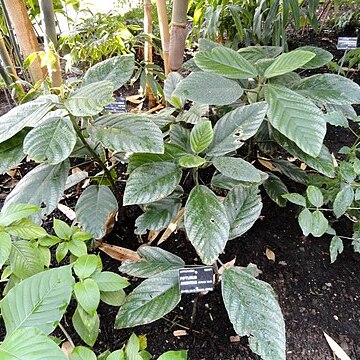A small tree up to 4-8 m tall. It spreads 4-8 m across. Young growth is silvery grey. The bark is grey to brown and has rows of small swellings along it. The leaves are alternate. They are 7-26 cm long by 2-8 cm wide. The leaves are green on top and woolly white underneath. They have fine to coarse teeth along the edges. They have a long stalk and 3 prominent veins. Plants are separately male and female. The flowers are greenish white. They occur in small round clusters. These form spikes about 6 cm long. They grow on older wood. The fruit are fleshy and like a mulberry. They are 0.6 cm across and white. They have many small seeds. They are edible.


